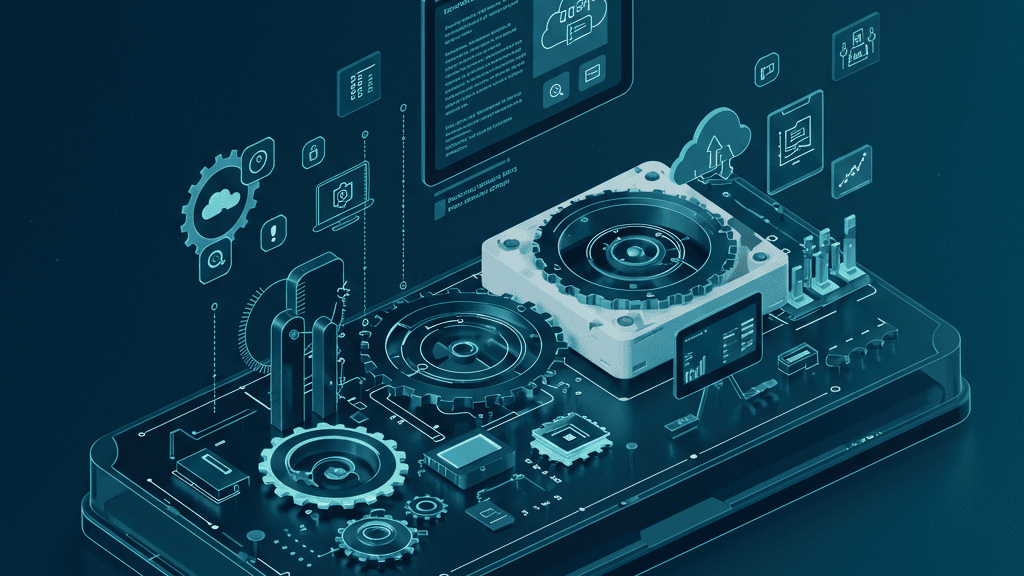
Current market trends in automation tools for small businesses
Digitalization has also profoundly changed small companies in recent years. The use of automation tools in particular is becoming increasingly important. According to a study by Statista, over 70 % of SMEs in Switzerland expect a significant increase in efficiency by 2025 through the use of digital solutions. The main focus will be on subscription management, payment automation and revenue optimization. The progressive integration of cloud-based SaaS solutions enables companies to automate repetitive tasks, reduce costs and increase customer satisfaction at the same time.
One practical example is the Zurich start-up GreenTech, which was able to speed up its invoicing by 40 % by introducing automated billing automation. This led to a reduction in the churn rate of 15 % within a year. Figures like these show how important automation is for small companies to be agile and customer-oriented in a competitive environment.
Challenges for SaaS companies
Despite the advantages, SaaS providers face specific challenges. The complexity of integrating payment automation with individual subscription models presents many with technical and organizational hurdles. At the same time, data protection and compliance requirements, especially in accordance with the GDPR and Swiss data protection laws, must be guaranteed.
Another critical point is customer acquisition. Smaller SaaS companies in particular often struggle with a high churn rate because they are unable to implement personalized and automated communication processes across the board. According to a survey by Deloitte, 45 % of SMEs stated that a lack of automation in customer management is a major reason for customer loss.
Finally, revenue optimization requires continuous analysis and adjustment of billing processes in order to minimize payment interruptions and ensure liquidity. A lack of transparency and manual processes often lead to inefficiencies here.
Innovative solutions and best practices
Today, modern automation tools offer comprehensive options for mastering these challenges. Cloud-based platforms allow the seamless integration of subscription management with payment automation and CRM systems. This enables a 360-degree view of the customer and optimizes the customer journey.
A tried and tested approach is the automation of invoicing and payment processing through intelligent billing automation. For example, the Swiss company EduSoft was able to speed up its payment processing by 50 % and reduce the error rate by 30 % at the same time by using an automated system. The combination with churn rate analysis tools helps to improve customer loyalty in a targeted manner.
In addition, many companies rely on AI-supported analyses to better understand customer behaviour and create personalized offers. This increases customer satisfaction and makes a significant contribution to revenue optimization.
Outlook for the future: What's next?
For 2025 and beyond, several trends are emerging that will make automation tools even more powerful. These include the increased use of artificial intelligence and machine learning to predict payment defaults and for automated up- and cross-selling. The integration of voice and chatbot technologies will also further improve interaction with customers.
Another important trend is the closer integration of financial processes with marketing and sales activities. This creates a holistic ecosystem that allows companies not only to reduce costs, but also to actively increase sales and build long-term customer relationships.
For Swiss SaaS companies, this means that they should focus even more on flexible, scalable automation solutions in the future in order to be able to react agilely to market changes and secure competitive advantages.
Recommendations for action
- Implement holistic billing automation that integrates subscription management and payment processes.
- Use AI-supported analysis tools to optimize the churn rate and for personalized customer acquisition.
- Ensure data protection and compliance in automation to build trust with customers.
- Combine financial, marketing and sales processes for holistic revenue optimization.
- Stay flexible and choose scalable solutions that can grow with your company.
Conclusion
Automation tools are no longer a luxury for small businesses in 2025, but a necessity to remain competitive. The integration of subscription management, payment automation and intelligent customer management makes a significant contribution to reducing the churn rate and optimizing revenue. Swiss SaaS companies that adopt these technologies at an early stage will secure sustainable growth and a strong market position.
Start analyzing your processes now and choose the right automation solutions to increase efficiency and customer satisfaction. Contact ASMIQ for a no-obligation consultation and discover how you can take your business to the next level with state-of-the-art automation!
Sources: Statista, Deloitte SME survey